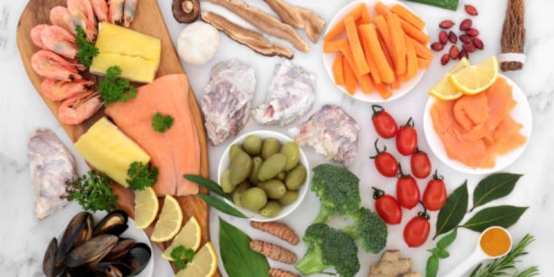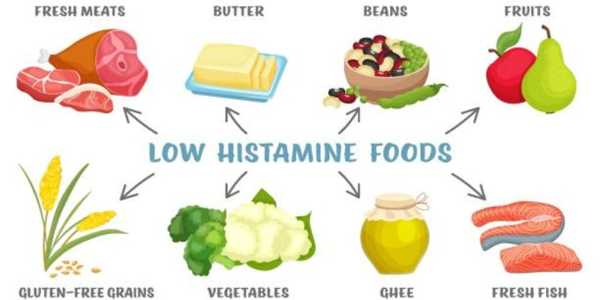The Benefits Of A Low-Histamine Diet For Sensitive Individuals
Many people struggle with symptoms that seem allergic in nature—such as hives, headaches, or digestive troubles—yet standard allergy tests come back clear. Often, the culprit is not a true allergy but histamine sensitivity.
Histamine is a natural compound the body needs, but in excess, it can create widespread and disruptive symptoms. For people with conditions like histamine intolerance (HIT), mast cell activation, migraines, irritable bowel syndrome (IBS), or chronic urticaria, following a low-histamine diet can be life-changing.
What is Histamine?
Histamine is a chemical messenger that naturally occurs in both the human body and certain foods. It plays several important roles:

Immune defence: Helps the body fight infections and respond to allergens.
Digestion: Stimulates stomach acid release to break down food.
Neurotransmission: Sends signals between nerve cells and regulates wakefulness.
While histamine is essential, too much of it—either from food, overproduction, or poor breakdown—can trigger symptoms such as itching, flushing, and headaches. The body typically uses an enzyme called diamine oxidase (DAO) to break histamine down. When this system struggles, problems arise.
What is Histamine Intolerance (HIT)?
Histamine intolerance is not a classic allergy but rather a situation where the body accumulates more histamine than it can process. Several factors increase histamine load:
DAO enzyme deficiency (genetic or acquired).
Gut health issues, such as dysbiosis or leaky gut.
Certain medications that slow histamine breakdown.
Genetic variations affecting histamine metabolism.
Common Symptoms of Histamine Overload:
Skin issues: flushing, hives, itching, eczema.
Digestive problems: bloating, diarrhoea, abdominal pain.
Neurological issues: migraines, dizziness, and brain fog.
Respiratory symptoms: nasal congestion, wheezing.
Cardiovascular effects: rapid heartbeat, low blood pressure.
What is a Low-Histamine Diet?
A low-histamine diet involves reducing foods that either contain high histamine or release histamine in the body. The goal is to lower the overall histamine burden, giving the body a chance to reset and rebalance.
This approach is often recommended for:
People with histamine intolerance.
Those with mast cell activation disorders.
Individuals with unexplained allergy-like symptoms resistant to treatment.
Benefits of a Low-Histamine Diet
Reduced Allergy-Like Reactions
People following this diet often notice fewer breakouts of hives, less skin flushing, and reduced itching.
Digestive Comfort
By avoiding histamine-rich foods, many experience less bloating, gas, and IBS-like discomfort.
Migraine Relief
Histamine is known to dilate blood vessels, which can trigger migraines. Many patients report fewer and milder headaches when reducing histamine intake.
Improved Energy
Since histamine overload contributes to inflammation, reducing it may lower fatigue levels and improve stamina.
Healthier Skin
Conditions like eczema and chronic rashes often improve with histamine reduction.

Mental Clarity and Mood Stability
As histamine also acts in the brain, reducing excess exposure can stabilise mood, reduce anxiety, and improve focus.
Better Sleep
Because histamine regulates wakefulness, lowering levels can help restore restful sleep patterns.
What Foods Should Be Avoided? (High-Histamine Foods List)
Aged & Fermented Foods
Cheese
Wine
Sauerkraut
Soy sauce
Processed Meats
Salami
Ham
Bacon
Fish (especially when not fresh)
Tuna
Mackerel
Sardines
Other Triggers
Leftovers or slow-cooked meals
Tomatoes, spinach, and eggplant
Alcohol (red wine, beer)
What Foods Are Safe / Recommended? (Low-Histamine Foods List)
Fresh Proteins
Freshly cooked meats and poultry
Fresh-caught or frozen low-histamine fish (e.g., cod)
Grains
Rice
Quinoa
Oats
Fruits
Apples
Pears
Blueberries
Vegetables
Zucchini
Carrots
Broccoli
Cooking Oils & Herbs
Olive oil
Coconut oil
Fresh herbs (basil, parsley, thyme)
Meal Planning & Practical Tips
Cook fresh meals and freeze portions immediately to prevent histamine build-up.
Avoid long cooking times, such as slow-cooking or keeping food warm for hours.
Substitute staples: instead of cheese, try fresh avocado; swap aged meats for fresh options.
Shop smart: buy smaller portions and eat them fresh instead of storing leftovers for days.
Challenges and Considerations
Risk of deficiency: Overly restricting food choices may lead to imbalances.
Tolerance is individual: Not everyone reacts to the same foods.
Keep variety: Rotate foods to maintain balanced nutrition.
Who Should Try It (and Who Shouldn’t)?
Best Candidates
Those with allergy-like symptoms without a diagnosis.
People suffering from chronic hives, migraines, and IBS-like issues.
Individuals with mast cell disorders.
Who Should Avoid a DIY Approach
Pregnant women.
Children.
Patients with complex medical conditions, unless guided by a specialist.

How to Get Started Safely
Phase 1: Elimination – 2 to 4 weeks of strict low-histamine foods.
Phase 2: Reintroduction – Bring back foods slowly to identify triggers.
Phase 3: Maintenance – Build a flexible diet that avoids problematic foods.
Keeping a symptom journal is critical. Working with a medical provider can also allow testing such as DAO enzyme activity or intolerance screening.
Key Takeaways for Sensitive Individuals
A low-histamine diet may significantly ease symptoms like migraines, skin rashes, digestive issues, and fatigue. The benefits extend to energy, mood, sleep quality, and overall wellbeing. Careful implementation, guided by healthcare professionals, ensures safety and effectiveness.
Sources
Related Posts

Vegan Chocolate Avocado Mousse: Creamy Without Dairy

How to Make Zucchini Lasagna: A Delicious Low-Carb Alternative

21 Best Road Trip Snacks to Satisfy Your Hunger

The Benefits Of A Low-Histamine Diet For Sensitive Individuals

Moroccan Tagine Recipes For Beginners: Easy, Authentic, And Flavorful Dishes
